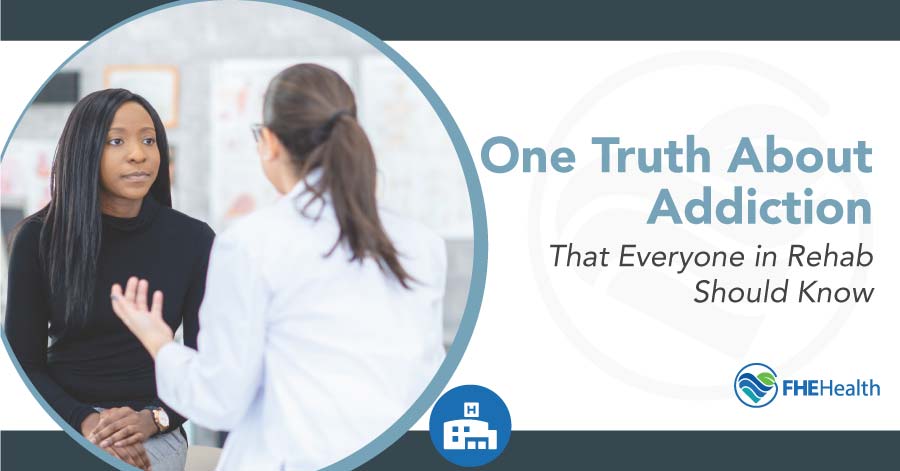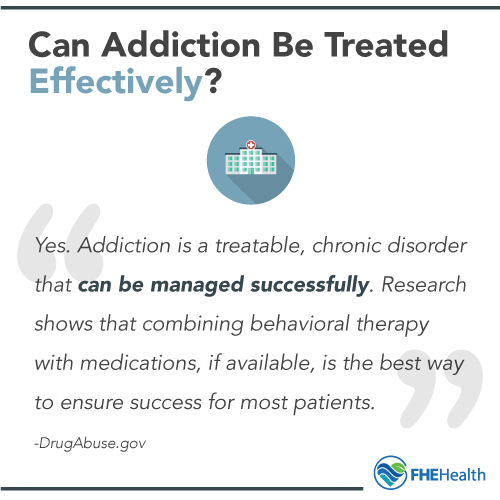
Since the turn of the century, society has made huge strides in our understanding of addiction. The number of people brushing it off as a “moral failure” or something that a person can just “get over on their own” has dropped considerably, and more and more people see addiction as the serious concern that it is.
Maybe this is because of the opioid crisis of the 2010s that forced people, many of whom were previously insulated, to face these issues head-on. Part of it is probably also credited to society’s collective awakening from “the war on drugs,” in which public policy and rhetoric painted addicts and other people involved with drugs as malicious criminals who could be remedied with punitive measures.
However, there’s still a gap between current awareness and where we ought to be, and in our research, we’ve found this extends to some treatment centers and populations in rehab. FHE Health is an institution that prides itself on staying with the best practices in the addiction treatment industry, and part of our role as a leader is to ensure that everyone, including those in rehab, knows how to treat addiction effectively.
So, what’s the one truth everyone in rehab should know?
Addiction Is an Incurable Disease
 There are, as with nearly any topic, a range of different philosophies about addiction. Some people — and even some treatment centers — consider graduating from a rehab program to be a cure for addiction. This implies that addiction is a temporary state and that after detox, the disease is technically cured because the addict is no longer actively (physically) dependent on their substance or behavior of choice.
There are, as with nearly any topic, a range of different philosophies about addiction. Some people — and even some treatment centers — consider graduating from a rehab program to be a cure for addiction. This implies that addiction is a temporary state and that after detox, the disease is technically cured because the addict is no longer actively (physically) dependent on their substance or behavior of choice.
The reality, and what we practice at FHE Health, is this, courtesy of the National Institute on Drug Abuse: Addiction is a disease that is both chronic and relapsing, meaning that while it can be treated and sent into remission, this complex brain disorder cannot be cured.
Addiction is categorized in the “Diagnostic and Statistical Manual of Mental Disorders,” Fifth Edition, also called the DSM-5, under the label Substance Use Disorder or SUD. The condition first appeared in the manual in 2013.
How We Learn About Addiction
A lot of the knowledge that we, as an industry, have built about the disease of addiction emerged from efforts to correct misconceptions.
For example, the prevailing belief that addiction came from weak morals led to a deeper study about how addiction manifests itself in the brain. This is how the treatment community discovered that addiction actually changes the chemistry of a person’s brain.
Another misconception is that addicts are known for relapses because they are somehow weaker-willed than the average person. Not only is this patently false, but studies have shown that in terms of relapse rate, addiction is actually on par with other chronic diseases.
NIDA compared substance addiction with chronic diseases that most people wouldn’t think of putting in the same breath with addiction: asthma and hypertension (high blood pressure). What these studies found is that not only is the relapse rate in the same ballpark as that of these other diseases, it’s actually lower.
NIDA used learning from decades of study and compiled a research-based guide to successful addiction treatment, called “Principles of Drug Addiction Treatment.”
How to Treat an Incurable Disease
 The more complex part of understanding a chronic, lifelong illness is to understand that, often, acute factors are involved. For example, diabetes is a common disease and one that can’t be cured, and certain factors can take the form of more acute (temporary) illnesses. If people with diabetes are unable to manage their disease, they risk suffering hypoglycemia or hyperglycemia as well as more severe conditions like diabetic ketoacidosis or retinopathy.
The more complex part of understanding a chronic, lifelong illness is to understand that, often, acute factors are involved. For example, diabetes is a common disease and one that can’t be cured, and certain factors can take the form of more acute (temporary) illnesses. If people with diabetes are unable to manage their disease, they risk suffering hypoglycemia or hyperglycemia as well as more severe conditions like diabetic ketoacidosis or retinopathy.
This is actually a good way to understand addiction: It’s a lifelong, chronic illness, but some of the more severe effects are acute. If a person is an addict, it doesn’t mean they’re always physically dependent on an addictive substance or that they’re going to undergo something short-term like withdrawal at all times.
In the same vein, the changes to brain function and chemistry that addiction brings on don’t go away. This is why people in recovery can still be highly susceptible to relapse, even after a long period of sobriety.
Putting Addiction in Remission
While chronic diseases can’t be cured, they can go into remission, which means that the symptoms of the disease are lessened or that they disappear entirely. While addiction isn’t as straightforward as some chronic diseases, remission is possible.
Here are the steps to moving from dependency to remission when treating an SUD:
Step 1: Accepting Treatment
This doesn’t mean that a person has to get treatment voluntarily, just that they make the commitment to comply with a full treatment program. There’s a misconception that court-ordered or legally mandated treatment is less effective, which has been shown to be false. As long as a person is showing up to their treatments as a participant, positive outcomes can happen.
For most patients suffering from addiction, the first step involves entering some sort of drug treatment program, either as a resident of a facility or a patient in an outpatient program.
Step 2: Detox
Addressing the acute physical compulsion for drugs and alcohol is the first priority in treatment. This involves helping wean a patient off their substance of choice and managing the physical effects of withdrawal.
Some treatment centers consist of detox by itself, which is not a strategy that provides the best recovery outcomes for a patient experiencing addiction. NIDA makes it clear that not only should detox not be treated as the entire journey to recovery, but the longer a person spends in rehab, the better the outcome will be.
Step 3: Rehab
The actual period of rehabilitation, which can take a variety of different forms, is intended to help in two ways:
- It helps patients learn tools and strategies to sustain their sobriety when they resume a normal life.
- It gives patients the information they need to understand addiction, especially the source of the disease as it pertains to their own circumstances.
This is why it’s important to undergo a full continuum of care for addiction. Each step plays a role in the development of the understanding that it takes to know exactly how to maintain sobriety into the future.
Step 4: Turning Treatment into Practice
There are numerous tools for being successful in the initial stages of your recovery, including 12-step groups and aftercare.
One key is to resist the feeling of absolute success. This is something people who deal with prolonged addiction understand, but for their families and other loved ones, it’s more difficult. Addiction treatment programs are often aimed at “fixing” the issue when this really means providing a patient with the building blocks of a recovery for which they have to be personally accountable for the rest of their lives.
So, Can Addiction Be Treated?
Yes, but it’s important to remember the distinction between “treating” a disease and “curing” it. Addiction is incurable, which means that if you’re experiencing it, you can absolutely live a full, normal life with it, not unlike people who are effectively managing chronic issues like asthma and diabetes.
The important thing is not to become overly confident. For the same reason that a person with diabetes who has seen their illness go into remission doesn’t stop taking their insulin, you should never be fooled into thinking you can never fall back into the heights of your disease. Understand the threat of addiction and how you can keep these threats from dragging you back down into the dangerous lifestyle of your past.
At FHE Health, we’re proud to adopt industry best practices into our treatment programs for addiction. If you or a loved one needs help to manage this disease, contact us today and learn more about the options for recovery.






